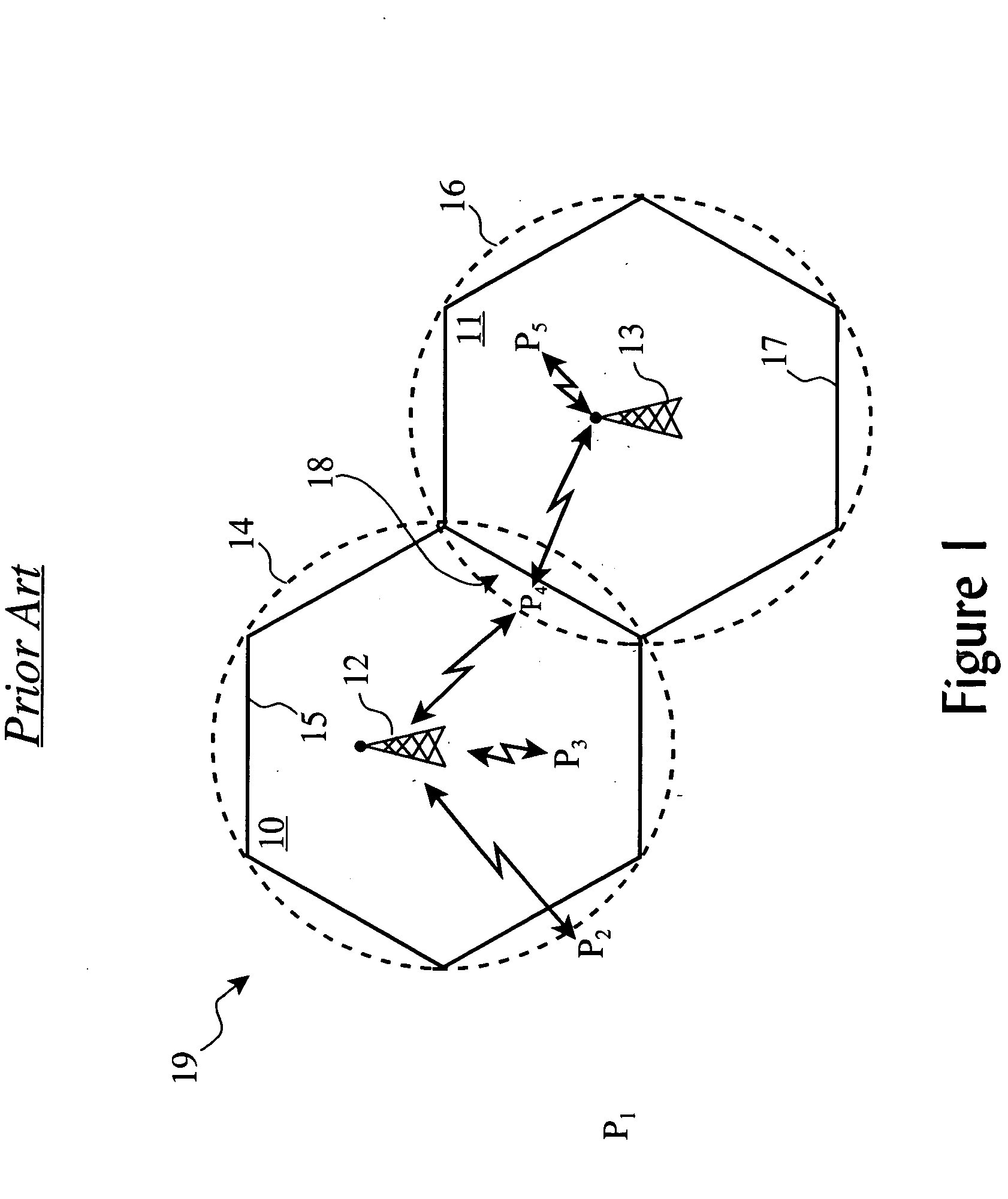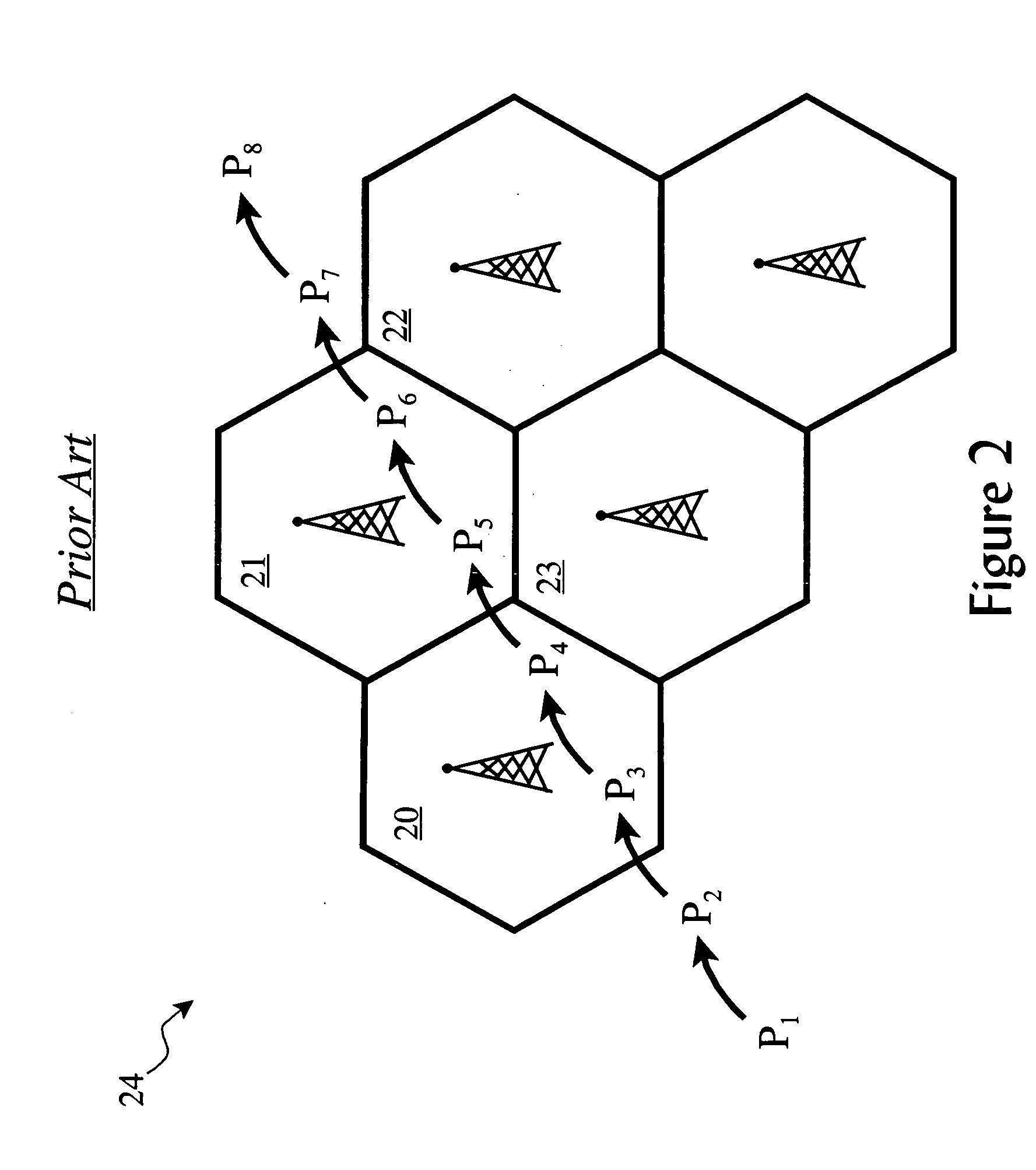Traffic shaping of cellular service consumption through modification of consumer behavior encouraged by cell-based pricing advantages
a technology of cellular service consumption and consumer behavior, applied in the field of dynamic cellular phone rate pricing, can solve the problems of increasing the cost of plans, fast always consuming even more power, and not providing this functionality, and achieve the effect of enhancing the utilization of cell towers
- Summary
- Abstract
- Description
- Claims
- Application Information
AI Technical Summary
Benefits of technology
Problems solved by technology
Method used
Image
Examples
Embodiment Construction
[0085] The present invention is preferably realized as circuitry or firmware stored in a wireless network device's memory (46) and executable by the device's controller (41), cooperating with logical processes provided by a server system operated by a wireless network service provider. The portion of the invention realized as executable by the wireless network device may be preprogrammed into the device, or it may be downloaded from a memory card, the wireless network or another data network or interface, as the capabilities of the device allow and within the business model of the service provider.
[0086] Throughout this disclosure, we will refer specifically to and provide examples of embodiments with respect to cellular telephone services. The present invention, however, is not limited to these embodiments, but may equally well be realized in conjunction with any wireless network services and systems wherein the service geography is served by a plurality of radio access points, su...
PUM
 Login to View More
Login to View More Abstract
Description
Claims
Application Information
 Login to View More
Login to View More - R&D
- Intellectual Property
- Life Sciences
- Materials
- Tech Scout
- Unparalleled Data Quality
- Higher Quality Content
- 60% Fewer Hallucinations
Browse by: Latest US Patents, China's latest patents, Technical Efficacy Thesaurus, Application Domain, Technology Topic, Popular Technical Reports.
© 2025 PatSnap. All rights reserved.Legal|Privacy policy|Modern Slavery Act Transparency Statement|Sitemap|About US| Contact US: help@patsnap.com



